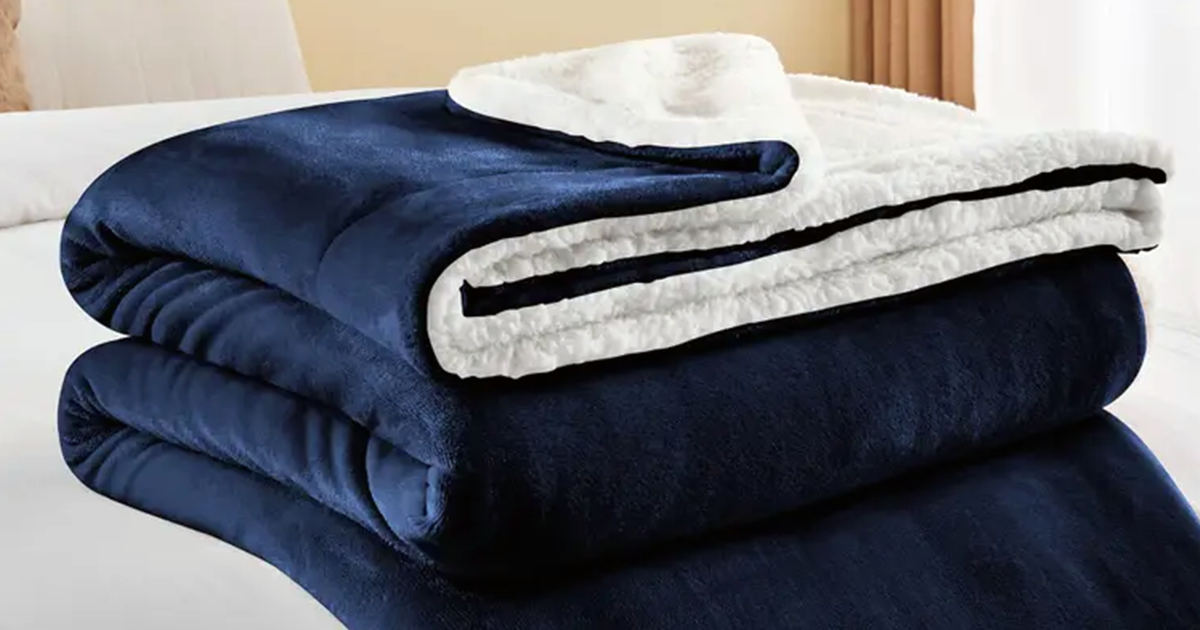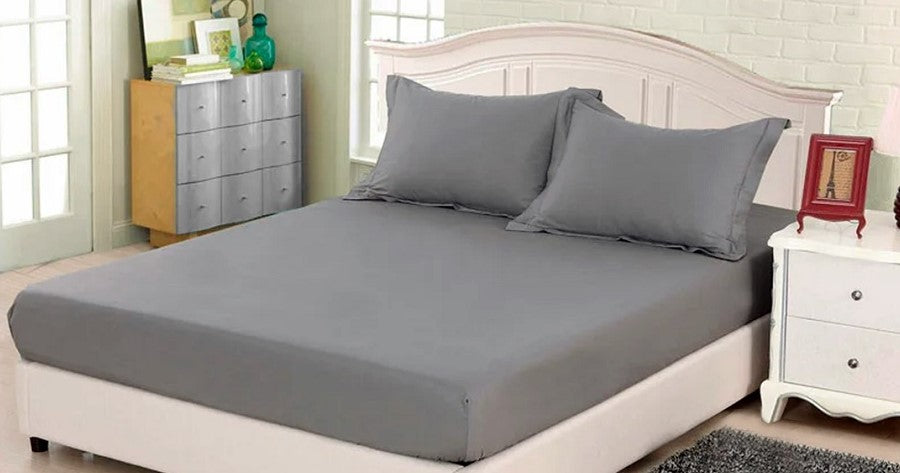In the ever-evolving world of cosy comforts, the Sherpa fleece blanket has emerged as a front-runner, offering a perfect blend of warmth and style. As winter approaches or a cool summer night beckons, wrapping yourself in the luxurious softness of a Sherpa fleece blanket is an experience like no other.
In this comprehensive guide, we will delve into the world of Sherpa fleece, exploring its origins, composition, and the myriad benefits it brings. From understanding the different types of Sherpa fleece to deciphering the nuances of care and choosing the perfect one for your needs, we've got you covered. So, let's embark on this journey into the snug embrace of Sherpa fleece blankets.
What Is Sherpa Fleece Blanket?
A Sherpa fleece blanket is a modern textile marvel, combining plush comfort with aesthetic appeal. The term "Sherpa" is borrowed from the indigenous people of the Himalayas, known for their resilience in harsh climates. Similarly, Sherpa fleece blankets are designed to withstand the chilliest temperatures, offering a cocoon of warmth.
These blankets typically feature a two-sided design: one side boasts a velvety, smooth surface, while the other replicates the texture of a lamb's wool, providing an added layer of insulation. As we explore the world of Sherpa fleece, it's essential to unravel the mysteries behind the fabric's composition.
What Is Sherpa Fleece Fabric Made Of?
Sherpa fleece fabric is an artificial wonder, carefully crafted to mimic the softness and warmth of natural wool. The base material for Sherpa fleece is often polyester, a synthetic fibre known for its durability and resistance to wear and tear.
The polyester fibres are woven into a dense fabric, creating the smooth surface of the blanket. The magic happens on the reverse side, where the fibres are manipulated to create a texture reminiscent of lamb's wool. This dual-textured design adds to the blanket's aesthetic appeal and enhances its insulating properties.
One of the key advantages of using polyester in Sherpa fleece production is its moisture-wicking capability. Unlike natural fibres that can retain moisture, polyester efficiently draws sweat away from the body, keeping you dry and comfortable.
Additionally, the synthetic nature of the material makes Sherpa fleece blankets hypoallergenic, making them an excellent choice for individuals with sensitive skin. As we navigate the benefits of Sherpa blankets, it's crucial to understand how the fabric's composition contributes to its overall appeal.
Benefits Of Sherpa Blanket
Sherpa fleece blankets are celebrated for their numerous benefits, making them popular for those seeking comfort and functionality. Here are some key advantages that set Sherpa blankets apart:
- Exceptional Insulation: The unique dual-sided design of Sherpa fleece provides unmatched insulation, keeping you warm and cosy in colder temperatures.
- Durability: Polyester, the primary material in Sherpa fleece, is known for its durability. These blankets withstand regular use and washing without losing their softness or structural integrity.
- Hypoallergenic Properties: For those with allergies or sensitive skin, Sherpa fleece blankets offer a hypoallergenic alternative to natural wool, preventing irritation and discomfort.
- Moisture-Wicking: The moisture-wicking properties of polyester keep you dry by pulling sweat away from your body, making Sherpa blankets an excellent choice for year-round use.
- Easy Maintenance: Sherpa fleece blankets are relatively low-maintenance. They are machine-washable, and the polyester fabric dries quickly, ensuring your blanket is always ready for use.
- Aesthetic Versatility: Sherpa fleece blankets come in various colours and patterns, allowing you to choose a style that complements your decor and personal preferences.
These benefits make Sherpa fleece blankets a versatile and practical addition to any home. As we explore the different types of Sherpa fleece, it's important to note how these features may vary based on the specific design and construction of the blanket.
Different Types of Sherpa Fleece
A. Traditional Sherpa Fleece:
The traditional Sherpa fleece blanket is characterised by its classic dual-sided design, with one side featuring a smooth, velvety texture and the other replicating the feel of lamb's wool. This timeless design remains a favourite among those who appreciate the traditional aesthetic of Sherpa fleece.
B. Sherpa-Lined vs. Sherpa-Backed Blankets:
Sherpa-lined blankets are crafted with a layer of Sherpa fleece sewn onto one side of the blanket, providing additional warmth without compromising the overall flexibility and drape of the fabric.

On the other hand, Sherpa-backed blankets have one side entirely made of Sherpa fleece, creating a more substantial and enveloping feel. The choice between Sherpa-lined and Sherpa-backed blankets depends on individual preferences for weight and insulation.
C. Blended Sherpa Fabrics:
In the world of textiles, innovation knows no bounds. Blended Sherpa fabrics combine the best of both worlds, incorporating additional materials like microfiber, cotton, or even wool. These blends offer unique textures and enhanced performance, catering to diverse preferences.

As you navigate the plethora of Sherpa fleece options, understanding these distinctions allows you to choose a blanket that aligns with your specific needs and preferences.
Caring for Your Sherpa Fleece Blanket
A. Washing and Drying Tips:
Maintaining the pristine condition of your Sherpa fleece blanket is crucial for its longevity and performance. Follow these washing and drying tips to ensure your blanket stays soft and cosy:
- Machine Wash: Use a gentle cycle with cold water to protect the integrity of the fabric.
- Mild Detergent: Opt for a mild, colour-safe detergent to prevent damage to the vibrant colours of your Sherpa blanket.
- Avoid Fabric Softeners: Fabric softeners can leave a residue on the fibres, diminishing the blanket's softness. Skip the softener and let the natural qualities of Sherpa fleece shine through.
- Air Dry or Low Heat: To prevent shrinkage or damage to the fabric, air-dry your Sherpa fleece blanket or use a low-heat setting in the dryer. Avoid high heat to preserve the integrity of the polyester fibres.
B. Storage Recommendations:
Proper storage ensures your Sherpa fleece blanket remains in top condition between uses. Here are some storage recommendations:
- Fold, Don't Hang: Folding your Sherpa fleece blanket prevents stretching and maintains its shape. Avoid hanging, as this can lead to distortion and loss of softness.
- Keep Away from Sunlight: Prolonged exposure to direct sunlight can fade colours and weaken fibres. Store your Sherpa blanket in a cool, dark place when not in use.
By incorporating these care practices into your routine, you can enjoy the enduring comfort of your Sherpa fleece blanket for years to come.
Sherpa Fleece Blankets in Different Seasons
A. Winter Warmth:
The primary allure of Sherpa fleece blankets lies in their ability to provide unparalleled warmth during the winter months. The dual-sided design traps heat, creating a cosy cocoon that shields you from the biting cold. Whether draped over a sofa for impromptu movie nights or layered on your bed for extra insulation, Sherpa fleece blankets are a winter essential.
B. Cozy Summer Evenings:
While Sherpa fleece blankets are synonymous with winter cosiness, their versatility also extends to warmer seasons. A lighter Sherpa blanket can add just the right amount of warmth during cool summer evenings without causing discomfort. Choose a blanket with a breathable design and consider the temperature of your surroundings to strike the perfect balance between comfort and cosiness.
As we explore the adaptability of Sherpa fleece blankets, it becomes clear that they are not confined to a single season but serve as a year-round companion for moments of relaxation and comfort.
How to Choose the Right Sherpa Fleece Blanket?
A. Consideration of Size:
Selecting the right size for your Sherpa fleece blanket depends on its intended use. For a single bed throw blanket, dimensions of 50x60 inches are standard, providing ample coverage for lounging on the sofa or adding an extra layer to your bedding. More extensive options, such as queen or king size bed throws, are ideal for bedspreads, ensuring complete coverage and maximum warmth.
B. Weight and Thickness Options:
Sherpa fleece blankets come in varying weights and thicknesses, allowing you to tailor your choice to your preferences. If you prefer a lighter feel, choose a thinner Sherpa blanket, perfect for cool summer evenings. Choose a thicker option that provides added insulation for winter warmth and a more substantial feel.
C. Personal Style Preferences:
Sherpa fleece blankets are available in many colours including black, grey, light blue, coffee, green, camel, navy, pink, rust, teal, ochre, purple, sliver and designs, allowing you to express your style. Whether you prefer a solid colour to complement your decor or a bold pattern to make a statement, the wide range of options ensures that you can find a Sherpa fleece blanket that resonates with your aesthetic sensibilities.
Consider these factors as you choose the perfect Sherpa fleece blanket to enhance your comfort and style.
What Is The Difference Between Fleece And Sherpa Fleece?
While both fleece and Sherpa fleece share a common goal of providing warmth and comfort, key differences set them apart. Fleece is a synthetic fabric made from polyester or a blend of polyester and other fibres. It has a smooth surface on both sides is known for its lightweight, moisture-wicking properties.
On the other hand, Sherpa fleece takes the concept of warmth to the next level. Its dual-sided design, featuring a velvety-smooth and textured, wool-like side, enhances its insulating capabilities.
The texture of the Sherpa side adds an extra layer of cosiness, replicating the feel of natural wool. While fleece is often preferred for its versatility and breathability, Sherpa fleece provides a luxurious, enveloping warmth that is especially appreciated during colder seasons.
Understanding these distinctions allows you to make an informed choice based on your comfort and style preferences.
Is Sherpa Fleece Real Wool?
Contrary to the name, Sherpa fleece is not made from natural wool. Instead, it cleverly mimics the texture of wool, providing a cosy and luxurious feel without using natural fibres.
The primary material in Sherpa fleece is polyester, a synthetic fabric known for its durability and moisture-wicking properties. The polyester fibres are skillfully manipulated to create the textured surface on one side of the blanket, replicating the warmth of traditional wool.
This distinction is essential for those who may have sensitivities to wool or seek a cruelty-free alternative. Sherpa fleece offers the tactile pleasures of wool without compromising on comfort or ethical considerations.
Conclusion
In the realm of blankets, the Sherpa fleece stands tall as a symbol of warmth, comfort, and versatility. From its humble origins as a synthetic textile to its evolution into a staple in homes worldwide, the Sherpa fleece blanket has proven its worth in providing a snug sanctuary during chilly nights and beyond.
Whether curled up on the couch with a good book or seeking solace from the winter cold, the Sherpa fleece blanket is a reliable companion. As we conclude our exploration into the world of Sherpa fleece, we invite you to embrace the unparalleled comfort and style that this modern marvel brings into your life.
FAQs:
Is Sherpa Warmer Than Fleece?
Yes, Sherpa fleece is generally warmer than regular fleece due to its dual-sided design, providing an extra layer of insulation.
Is Sherpa Warm In Winter?
Sherpa fleece blankets are designed for winter warmth, offering a cosy haven during cold temperatures.
Is Sherpa Fleece Itchy?
No, Sherpa fleece is not itchy. The synthetic polyester fibres are crafted to be soft and gentle on the skin, making Sherpa blankets comfortable.



